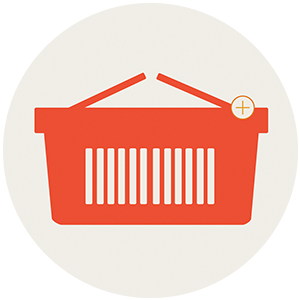You’ve finally settled on Shopify for your eStore but, it still feels overwhelming. There are so many experts out there giving conflicting advice — which can be distracting when you just want a small online shop.
10 Things to Know Before Creating a Shopify eStore
Creating a Shopify eStore is an exciting venture, offering the opportunity to reach a global audience and grow your brand. However, like any new endeavor, it comes with its own set of challenges. Here are ten things you should know before diving into the world of online retail, along with tips to overcome common hurdles and a summary of the many benefits awaiting you.
1. Understand the Platform
Before launching your Shopify store, familiarize yourself with the platform. Shopify offers a user-friendly interface, but understanding its features, such as product listings, payment gateways, and app integrations, can save you time and frustration. Take advantage of Shopify’s tutorials, forums, and support to get started on the right foot.
2. Define Your Niche
One of the first steps in building a successful eStore is identifying your niche. A well-defined niche helps you target the right audience and tailor your marketing strategies effectively. Conduct market research to understand customer needs and preferences, which will guide your product selection and branding.
3. Plan Your Inventory
Managing inventory can be challenging, especially for new store owners. Overstocking can lead to excess costs, while understocking might mean lost sales. Use Shopify’s inventory management tools to track stock levels and analyze sales data for better forecasting. Consider starting small and expanding as you understand demand patterns.
4. Optimize Your Store Design
Your store’s design is crucial in making a positive first impression. Choose a clean, responsive theme that aligns with your brand identity. Shopify offers numerous customizable themes, so take time to explore them. Ensure your store is mobile-friendly, as a significant portion of online shopping is done on mobile devices.
5. Set Up Secure Payment Gateways
Security is a top priority for online shoppers. Ensure your store supports secure payment gateways like Shopify Payments, PayPal, or Stripe. Display security badges on your site to build trust with customers. Additionally, familiarize yourself with Shopify’s fraud analysis tools to protect your business.
6. Create Compelling Product Descriptions
Effective product descriptions are key to converting visitors into buyers. Focus on the benefits and unique features of your products. Use high-quality images and consider adding customer reviews for social proof. Well-written descriptions can significantly boost your store’s credibility and sales.
7. Understand SEO Basics
Search engine optimization (SEO) is critical for driving organic traffic to your store. Research relevant keywords and incorporate them into your product titles, descriptions, and meta tags. Shopify provides built-in SEO features, but you may also want to explore additional SEO apps to enhance your efforts.
8. Plan Your Marketing Strategy
A strong marketing strategy is essential for reaching and engaging potential customers. Utilize social media, email marketing, and paid advertising to promote your store. Shopify offers integrations with popular marketing platforms, making it easier to manage campaigns and track performance.
9. Prepare for Customer Service
Responsive and helpful customer service can set your store apart. Be prepared to handle inquiries and issues promptly. Shopify provides customer management tools, but consider adding live chat or chatbot services to improve response times and customer satisfaction.
10. Analyze and Adapt
Once your store is live, regularly analyze performance metrics such as traffic, conversion rates, and customer feedback. Use this data to make informed decisions and adjust your strategies as needed. Shopify’s analytics tools offer valuable insights to help you continuously improve your store.
Overcoming Common Challenges
New shop owners often face challenges such as technical difficulties, managing logistics, and building brand awareness. Here are some tips to overcome these hurdles:
- Technical Support: Leverage Shopify’s support resources or hire a Shopify expert to assist with technical issues.
- Logistics Management: Partner with reliable suppliers and consider using Shopify’s shipping and fulfillment services for efficiency.
- Brand Awareness: Focus on creating a strong brand identity and leverage social media to reach a wider audience.
Benefits of Launching a Shopify eStore
Launching a Shopify eStore offers numerous benefits, including:
- Global Reach: Access a worldwide customer base.
- Scalability: Easily expand your store as your business grows.
- Low Overhead Costs: Save on physical store expenses.
- Comprehensive Tools: Utilize Shopify’s extensive range of tools and apps to manage your business efficiently.
The Takeaway
Starting your Shopify eStore may seem daunting, but with the right preparation and mindset, success is within reach. Embrace the journey, learn from challenges, and remember that every successful store owner started where you are now. With dedication and perseverance, you can create a thriving online business. Happy selling!
Understand Shopping Trends
We’re dropping our next newsletter in July 2025. Sign up for exclusive freebies, giveaways, and industry insights.


